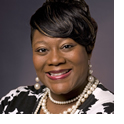
A Note from Ujima Donalson,
POD Director
When hiring new employees, managers sweat buckets-full of details. Is the job description current? Does it accurately reflect the position’s core responsibilities? Does this applicant’s experience equip him or her to hit the ground running? Does that one’s background and education fill a gap within the organization? And so on. In fact, it’s easy to get so swept up in the hiring process that sometimes we may forget that our work doesn’t end there.
But as the articles in this issue of the Leading Edge demonstrate, how we welcome, orient, and acclimate new employees can make the difference between an employee who becomes a committed and integral part of the team or one who floats along until something “better” comes up.
Four years ago, Human Resources overhauled the online orientation for Seattle-based classified and professional staff, and HR Vice President Mindy Kornberg charged POD with creating an in-person orientation. Since that time, more than 1400 UW employees have attended the in-person new employee orientation, Making Connections. The data we’ve collected from participants shows that the in-person NEO workshop earns high marks from most participants and meets its objectives to welcome new employees to the UW, connect employees to the UW and to each other, and provide a general orientation to UW’s culture, organizational structure, and policies.
One thing we’ve noticed, however, is that some new employees aren’t being given all the pieces of the on-boarding puzzle. And that’s where you, as a manager, can help.
As we all know, the UW is a vast and complicated place. While departments may have their own standards, the UW doesn’t have wholly standardized hiring practices (for instance, an employee might start on the first of the month or on the third Saturday). As a consequence, it’s impossible to have a one-size-fits all approach to on-boarding, which means that an employee’s on-boarding process will be made up of many pieces. You can help ensure that all those pieces fit together so that employees are being appropriately oriented from the micro to the macro level—to their role, to their team, to their department, and to the UW as a whole.
It’s never too late to beef up, or fine tune, your department’s on-boarding process—or to on-board not-so-new employees who may have fallen through the cracks. I hope the articles in this issue of the Leading Edge will give you a fresh perspective on on-boarding and help you see that solving this puzzle isn’t so challenging after all.


